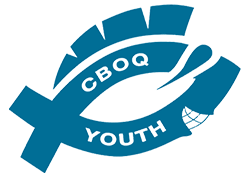Your typical student is likely digitally connected, whether it’s through texting, social media, gaming or other channels. Some youth ministries embrace all these channels. Others would rather restrict them and get back to “real relationships” So how do you engage these digitally connected youth?
First of all, let’s remember that for Generation Z, digital connections are just as real as in-person ones. For many students, their identity encompasses both the physical and digital realms. Known to be digital natives, it’s part of their world.
To understand better, let’s make a parallel comparison between people (like me, aka Alvin) raised in urban centres and grocery stores. I get my food from a grocery store. To me, that’s where food comes from! Compare that to someone who’s raised on a farm. They know where food comes from (whether animals or crops). While I know cognitively where food comes from, the way I look at a fried chicken dinner (i.e. buy it already processed and heat it up in the oven) is different from how a farmer sees a fried chicken dinner (i.e. gets a live chicken and prepares it). We need to recognize that for Generation Z, the digital realm is part of their reality.
Given this, how do we approach youth and their digital connections? (Note: this isn’t a comprehensive survey since there are many other in-depth resources to walk through this. But here are some points to consider.)
- Recognize how youth see their connection points and focus on ways to deepen them. This includes understanding appropriate boundaries for certain kinds of conversations (i.e. which ones are best via text and which are best in person).
- Utilize their digital connections. Sometimes, having the world’s facts at their fingertips can be a huge benefit. You can ask them to poll their friends through their tech for quick answers to impromptu surveys. You can have them research with you. (This is assuming there’s support in discerning good info vs false facts.)
- Recognize moments where tech is not needed. Many youth leaders understand the value of not always having access to mobile devices. Similarly, for those of us who’ve grown up with constant electricity accessible, we fail to appreciate moments when we don’t need to access it. (CBM used to have a fundraiser called 24-hour blackout which helped to understand power usage and appreciate non-electricity-powered moments.) Providing a space where the focus is in the in-person moment versus what’s digitally available can bring moments of pause which God wants us to take periodically to connect with him.
There is no one way for youth ministries to engage with youth and their digital connections. Part of it is understanding your students: who they are and how God wants to shape them. From there, you can discern the best ways to walk with your students, whether in-person or digitally.




Leave A Comment